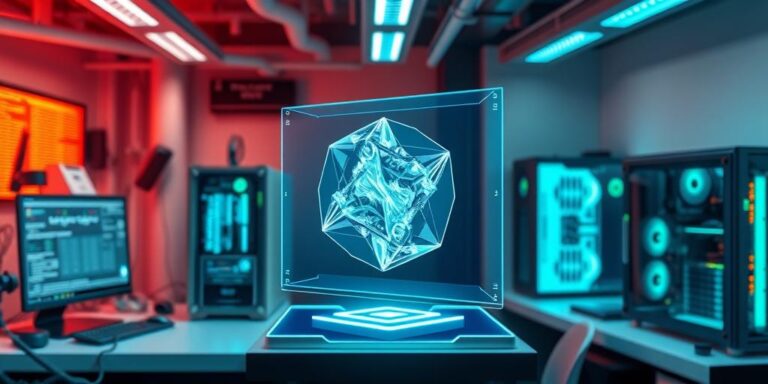Holographic Displays and Volumetric Computing: The Sci-Fi Future (2028)
The year is 2028. What was once confined to the realms of science fiction is rapidly becoming reality: holographic displays and volumetric computing. These technologies promise to revolutionize how we interact with information, offering immersive and intuitive experiences that go far beyond the limitations of traditional screens. Let’s dive into the current state and near-future potential of these exciting advancements.
What are Holographic Displays?
Holographic displays project three-dimensional images into space, viewable without the need for special glasses or headsets. Unlike 3D displays that simulate depth, holograms create genuine 3D images by reconstructing light fields. This is achieved through various methods, including laser interference, diffraction, and spatial light modulators. Imagine interacting with a virtual object floating right in front of you – that’s the power of holographic display technology.
Current State of Holographic Displays
While fully realized, consumer-grade holographic displays are still in development, significant strides have been made:
- Research and Development: Universities and tech companies are actively researching advanced holographic techniques. Prototypes demonstrate increasing resolution, color fidelity, and viewing angles.
- Commercial Applications: Niche applications are emerging in fields like medical imaging, architectural visualization, and scientific research. These displays allow professionals to visualize complex data in a more intuitive way.
- Challenges: Key challenges remain, including reducing the size and cost of holographic systems, improving image stability, and increasing computational power for real-time rendering.
Volumetric Computing: The Engine Behind the Hologram
Volumetric computing is the computational framework that enables holographic displays to function. It involves processing and rendering 3D data in a way that accurately recreates light fields. This requires immense processing power and sophisticated algorithms to simulate how light interacts with objects in a three-dimensional space.
Key Aspects of Volumetric Computing:
- Real-time Rendering: Volumetric computing systems must render images in real-time to allow for interactive experiences. This necessitates highly efficient algorithms and powerful processing units.
- Data Acquisition: Capturing and representing 3D data is crucial. Techniques like photogrammetry, LiDAR, and structured light scanning are used to create detailed 3D models.
- Light Field Reconstruction: Volumetric computing algorithms reconstruct the light field of a 3D scene, enabling the creation of realistic holograms. This involves simulating the propagation of light waves and their interaction with virtual objects.
Applications in 2028
By 2028, holographic displays and volumetric computing are poised to make a significant impact across various industries:
- Entertainment: Immersive gaming experiences, holographic concerts, and interactive storytelling will become commonplace. Imagine attending a live concert of your favorite band, with their holographic avatars performing right in your living room.
- Education: Holographic displays will revolutionize education by allowing students to interact with 3D models of complex structures, such as the human heart or a historical artifact. This will enhance understanding and engagement.
- Healthcare: Surgeons will use holographic displays to visualize patient anatomy before performing complex procedures. Medical students will be able to practice surgical techniques on holographic patients, improving their skills and reducing errors.
- Design and Engineering: Architects and engineers will use holographic displays to visualize and manipulate 3D models of buildings and products. This will streamline the design process and improve collaboration.
Challenges and Opportunities Ahead
Despite the immense potential, significant challenges remain:
- Computational Power: Volumetric computing demands massive processing power. Advances in GPU technology and parallel processing are crucial for enabling real-time rendering.
- Data Storage and Transmission: Handling large amounts of 3D data requires efficient storage and transmission methods. Cloud computing and 5G networks will play a vital role in enabling seamless holographic experiences.
- Standardization: Developing industry standards for holographic displays and volumetric computing will be essential for interoperability and widespread adoption.
The convergence of holographic displays and volumetric computing represents a paradigm shift in how we interact with information. By 2028, these technologies will transform numerous industries, offering immersive, intuitive, and engaging experiences that were once confined to the realm of science fiction. As research and development continue to accelerate, the future of holographic displays and volumetric computing looks brighter than ever.




